Lied 5: Phantasie aus Don Juan
The text from both the “Serenade” and “Phantasie” come from Tirso de Molina’s 1630 play Don Juan. Mahler arranged both songs for voice, harp, and wind ensemble. He indicated breath marks at the end of each line of text which fit well textually. If possible, the tubist should consider removing at least one breath, making […]
Lied 4: Serenade aus Don Juan
The fourth song in the collection was inspired by Tirso de Molina, a poet and Spanish monk. The text from both the “Serenade” and “Phantasie” come from Tirso de Molina’s 1630 play Don Juan. Mahler arranged both songs for voice, harp, and wind ensemble. He indicated breath marks at the end of each line of text […]
Lied 3: Hans und Grethe
The third song in the collection, “Hans und Grethe” is a wonderful mixture of waltz-like fervor and sublime self-introspection. Many of Mahler’s early songs provided inspiration for later symphonic works; the opening of “Hans und Grethe” was eventually used in the second movement of his first symphony. The dancelike structure of the song is typical […]
Lied 2: Erinnerung
The second song in the collection, “Erinnerung” (Remembrance), contains text by Richard Leander. Curiously, this song starts in F minor but ends a whole step higher in G minor. This is the only piece in the collection to make this sort of tonal transition. The breath marks 14 follow the punctuation of the text; however, the […]
Lied 1: Fruhlingsmorgen
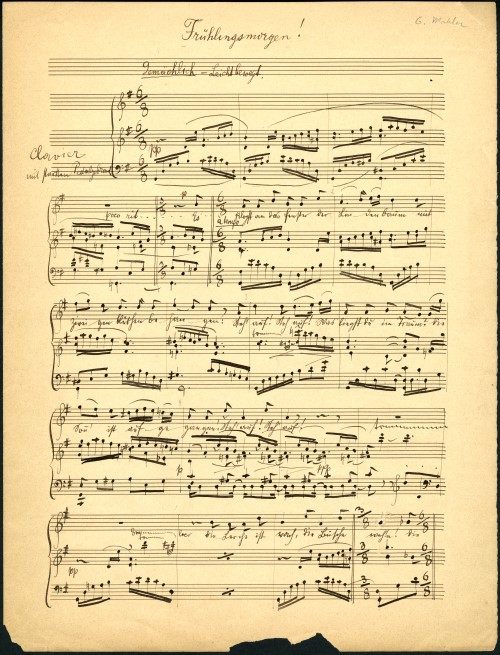
The first song in the Mahler collection, “Fruhlingsmorgen” (Spring morning), incorporates text written by Richard Leander. As notated in the piano part, the pianist is encouraged to use the pedals freely in order to produce a full and resonant of a sound. Text: Richard Leander (Richard Volkmann (1830-1889)). Score Gustav Mahler Lied 1: Fruhlingsmorgen. Fruhlingsmorgen […]
Lied 3: Hochzeitsstuck (Wedding Piece)
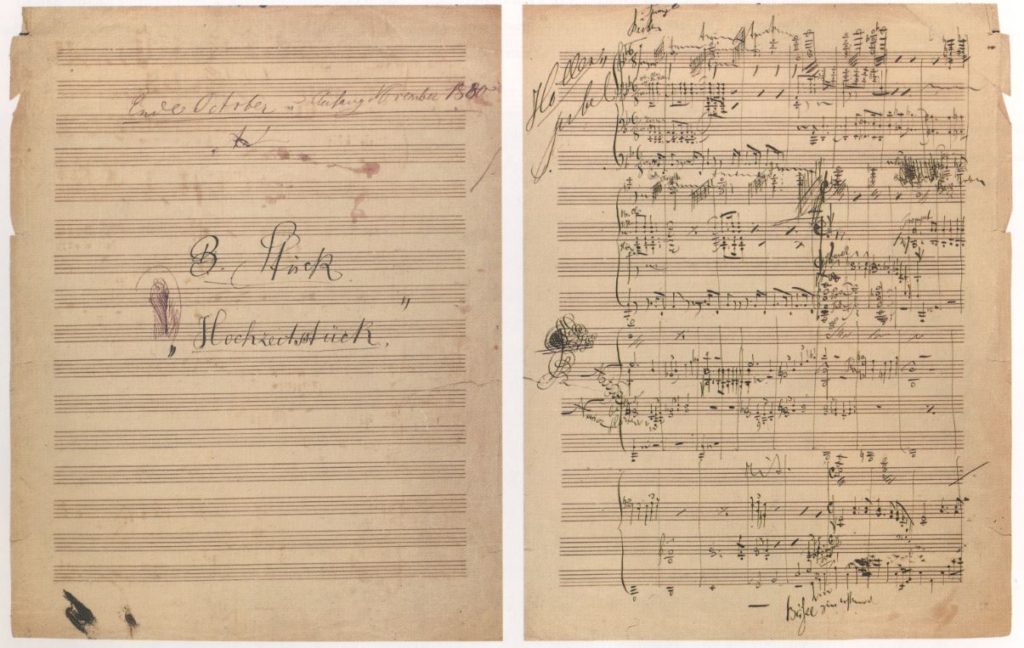
On the day that the minstrel arrives at the castle there is just a party going on for the occasion of the upcoming wedding of the queen and the eldest brother. The murderer is pale and feels guilty about the way he earned his royal engagement. The minstrel plays the flute and the song of […]
Lied 2: Der Spielmann (The Minstrel)

A minstrel that runs through the forest finds a bone under a tree, and cuts a flute. When he plays the flute, the voice of the murdered youngest brother, who tells the story of his unfortunate death, sounds. The minstrel feels that he can not leave this story untold and goes on his way to […]
Lied 3: Maitanz im Grunen
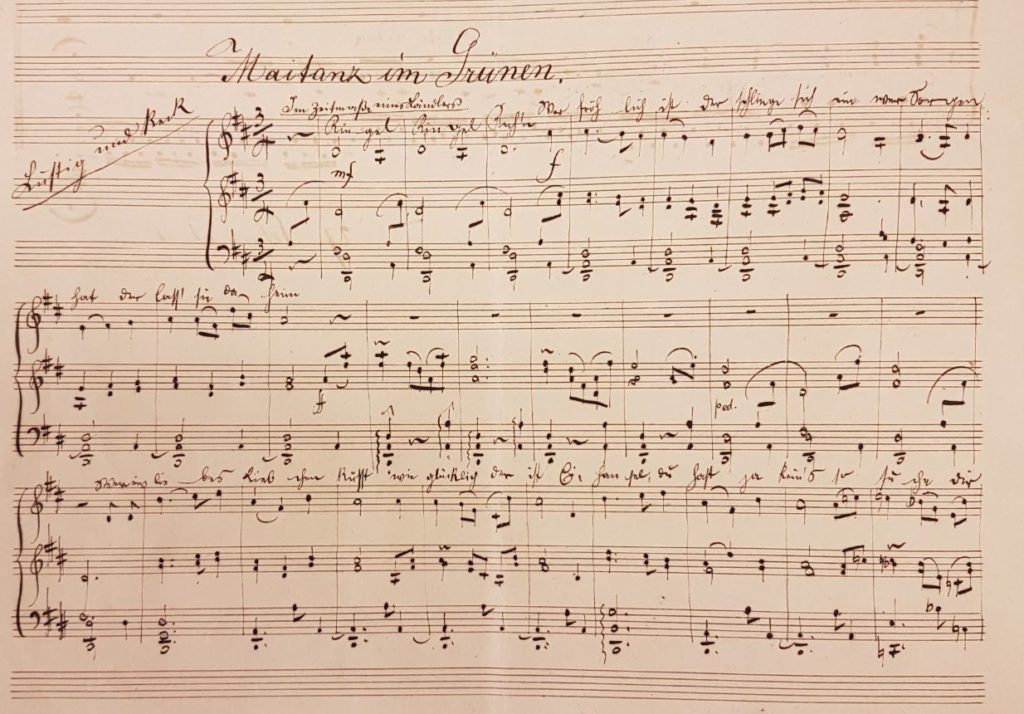
The final surviving song of the set, Maitanz im Grünen (May Dance on the Green) is an early version of Mahler’s first published song Hans und Grethe. This is in more of a Gesang style than a Lied style, that is, more of a folk song than an art song. In spite of that, it […]
Lied 2: Winterlied
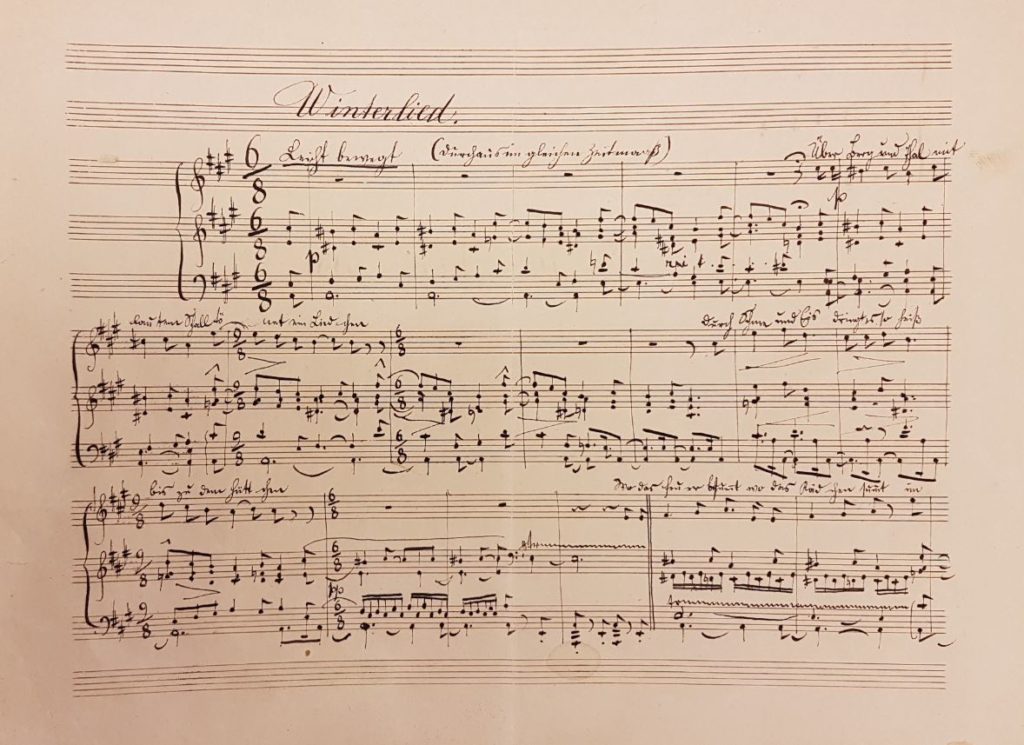
Winterlied is better organized, being based on a single unifying motive stated in the piano at the very beginning of the song. In the central part of the song, the sixteenth-note accompaniment of the piano illustrates the spinning wheel mentioned in the text. Once again, Mahler draws upon Das klagende Lied for the song’s conclusion. […]
Lied 1: Im Lenz
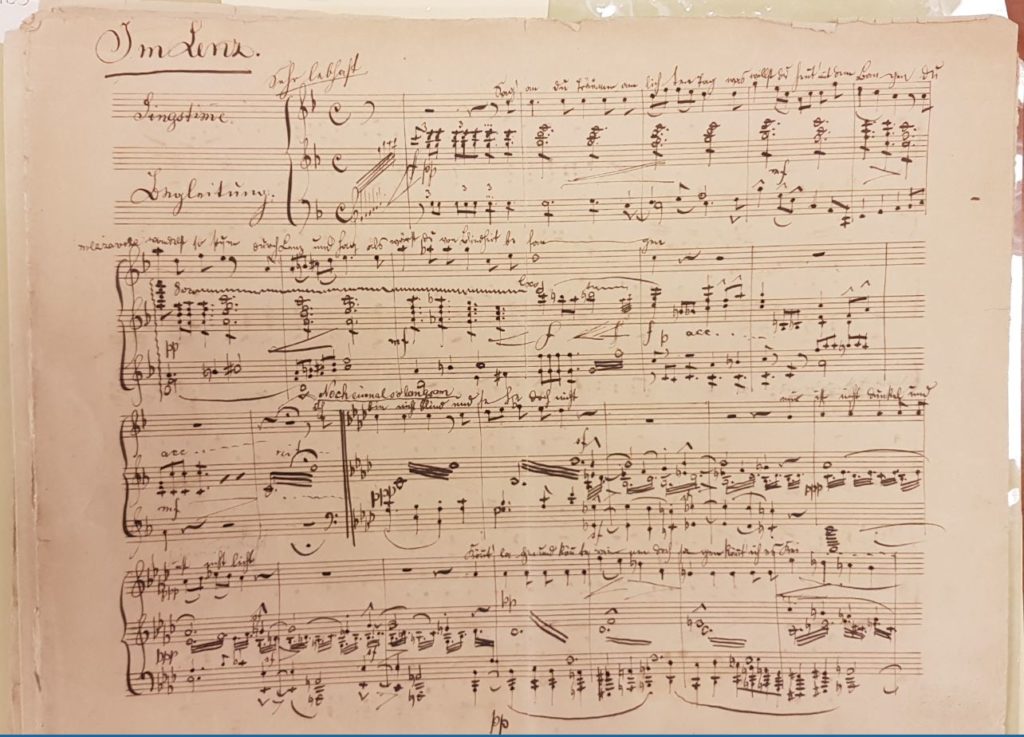
Im Lenz (Spring) alternates a lively musical idea for the first and third stanzas with a more mysterious passage for the second and fourth that is actually quoted from Mahler’s Das klagende Lied. Overall, the song vacillates from key to key and idea to idea too quickly to be musically effective. Text: Gustav Mahler. Dedicated […]
